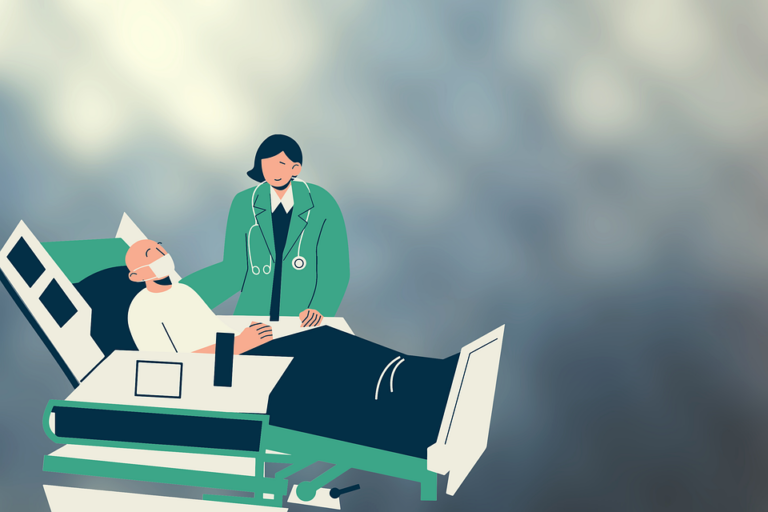Book Appointment Now

Understanding Justice in Healthcare
Ensuring justice in healthcare means providing fair and equitable access to care and resources for all individuals, regardless of their socioeconomic status, geographic location, or background. As healthcare disparities continue to impact underserved communities, the principle of justice guides healthcare providers to make ethical decisions that promote equal treatment and resource allocation. By upholding justice, healthcare systems not only enhance individual health outcomes but also strengthen public health and foster a more inclusive, patient-centered healthcare environment.
Get a custom paper help about understanding justice in nursing
Order Custom Nursing Paper
Barriers to Justice in Healthcare: Why Inequities Persist
Several factors contribute to inequities in healthcare access, particularly in underserved communities:
- Geographic Disparities: Rural and remote areas often lack healthcare facilities, resulting in limited access to primary care, specialists, and emergency services.
- Socioeconomic Barriers: Individuals with low income may face obstacles such as lack of insurance, inability to afford medications, or limited access to preventive care.
- Racial and Ethnic Disparities: Studies have shown that racial and ethnic minorities often receive lower-quality care, have higher rates of chronic disease, and face implicit biases within healthcare systems.
- Health Literacy: Limited health literacy in certain communities can lead to poor understanding of health conditions and available services, reducing access to preventive care and treatment.
These barriers create significant challenges in achieving justice and fairness in healthcare. To address them, healthcare systems must adopt targeted, inclusive approaches that promote equity and access to care.
Strategies for Promoting Justice in Healthcare
- Expanding Healthcare Access in Underserved Areas
- To address geographic disparities, healthcare systems can invest in establishing clinics, mobile health units, and telemedicine services in rural and underserved regions. By bringing care closer to patients, healthcare providers can reduce travel times and improve access to essential services.
- Example: Many rural areas benefit from telemedicine programs that connect patients with specialists, allowing for consultations and follow-up care without requiring travel to urban centers.
- Improving Affordability and Insurance Coverage
- Ensuring fair access to healthcare requires addressing financial barriers. Expanding insurance coverage through government programs, sliding scale fees, or partnerships with non-profits helps make healthcare affordable for low-income individuals.
- Example: Medicaid expansion initiatives in various states have reduced the uninsured rate, providing low-income patients with access to preventive care and reducing emergency room visits.
- Addressing Implicit Bias and Cultural Competency in Healthcare
- Racial and ethnic disparities can be mitigated by training healthcare providers in cultural competence and awareness of implicit biases. This enables providers to deliver respectful, equitable care to patients of all backgrounds.
- Example: Hospitals and clinics often implement cultural competency programs that help staff understand the unique needs of different communities, improving communication and fostering trust.
- Allocating Resources Based on Need
- To ensure that limited resources are distributed fairly, healthcare systems can allocate funding, staff, and medical supplies based on community needs rather than using a one-size-fits-all approach. Needs assessments can help identify areas with higher demands for certain services, like chronic disease management or mental health support.
- Example: Resource allocation for community-based mental health services may be prioritized in areas with high rates of substance abuse or mental health crises, addressing a critical need within the population.
- Increasing Health Literacy and Patient Education
- Improving health literacy helps individuals make informed health choices, understand treatment options, and access preventive care. Community outreach and educational programs are essential in underserved areas to provide patients with the knowledge they need to manage their health.
- Example: Community health workers can be deployed to educate patients on managing conditions like diabetes or hypertension, empowering individuals with tools for self-care and reducing hospital admissions.
The Role of Technology in Advancing Justice in Healthcare
Technology offers significant opportunities to address healthcare inequities, especially in remote and underserved communities. Digital health solutions, like telemedicine and mobile health applications, bring healthcare services to patients who may otherwise struggle to access them.
Telemedicine for Rural and Low-Income Patients: Telemedicine bridges geographic and financial gaps, providing virtual consultations, follow-up care, and mental health services to patients in remote areas or those with limited mobility. This access to remote care reduces the need for travel and lowers healthcare costs for patients.
Data-Driven Resource Allocation: Using data analytics, healthcare systems can identify and predict areas with the greatest needs, allowing for targeted resource allocation. For example, data on chronic disease prevalence can guide funding for diabetes or heart disease programs in communities with high incidence rates.
Mobile Health Clinics: Mobile clinics equipped with basic diagnostic tools and staffed with healthcare providers can serve hard-to-reach populations, bringing healthcare directly to underserved communities. These clinics can offer preventive screenings, vaccinations, and routine check-ups, promoting equitable healthcare access.
The Benefits of Upholding Justice in Healthcare
Promoting justice in nursing leads to a more equitable, effective healthcare system that benefits both individuals and society as a whole. When access to care is equitable:
- Improved Health Outcomes: When underserved communities receive timely care, health outcomes improve. For instance, increased access to preventive screenings can lead to earlier detection of diseases, which is often associated with better prognosis and lower treatment costs.
- Reduced Healthcare Costs: Equitable access to preventive and primary care reduces the need for emergency interventions, ultimately lowering healthcare costs for both patients and providers.
- Stronger Public Health: Equitable healthcare strengthens overall public health, as diseases are more effectively managed across communities, reducing the spread of communicable diseases and managing chronic conditions before they escalate.
Moving Forward: Building an Equitable Healthcare System
Achieving justice in healthcare requires a sustained commitment from healthcare providers, policymakers, and communities. Healthcare systems must continuously assess and address the barriers that limit fair access to care. By embracing an ethical framework grounded in justice, healthcare organizations can prioritize the needs of underserved communities and create a system where everyone has the opportunity to achieve optimal health.
Justice in healthcare calls for equitable access to care and resources, ensuring that all individuals, regardless of background or location, receive the healthcare they need. Through targeted strategies, resource allocation, and the use of technology, healthcare systems can work toward reducing disparities and fostering a more just and inclusive healthcare environment for all.
Also read:







